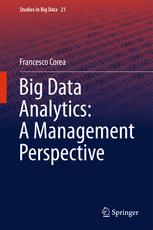

Most ebook files are in PDF format, so you can easily read them using various software such as Foxit Reader or directly on the Google Chrome browser.
Some ebook files are released by publishers in other formats such as .awz, .mobi, .epub, .fb2, etc. You may need to install specific software to read these formats on mobile/PC, such as Calibre.
Please read the tutorial at this link: https://ebookbell.com/faq
We offer FREE conversion to the popular formats you request; however, this may take some time. Therefore, right after payment, please email us, and we will try to provide the service as quickly as possible.
For some exceptional file formats or broken links (if any), please refrain from opening any disputes. Instead, email us first, and we will try to assist within a maximum of 6 hours.
EbookBell Team

5.0
110 reviewsThis book is about innovation, big data, and data science seen from a business perspective. Big data is a buzzword nowadays, and there is a growing necessity within practitioners to understand better the phenomenon, starting from a clear stated definition. This book aims to be a starting reading for executives who want (and need) to keep the pace with the technological breakthrough introduced by new analytical techniques and piles of data. Common myths about big data will be explained, and a series of different strategic approaches will be provided. By browsing the book, it will be possible to learn how to implement a big data strategy and how to use a maturity framework to monitor the progress of the data science team, as well as how to move forward from one stage to the next. Crucial challenges related to big data will be discussed, where some of them are more general - such as ethics, privacy, and ownership – while others concern more specific business situations (e.g., initial public offering, growth strategies, etc.). The important matter of selecting the right skills and people for an effective team will be extensively explained, and practical ways to recognize them and understanding their personalities will be provided. Finally, few relevant technological future trends will be acknowledged (i.e., IoT, Artificial intelligence, blockchain, etc.), especially for their close relation with the increasing amount of data and our ability to analyse them faster and more effectively.